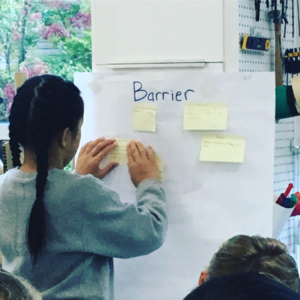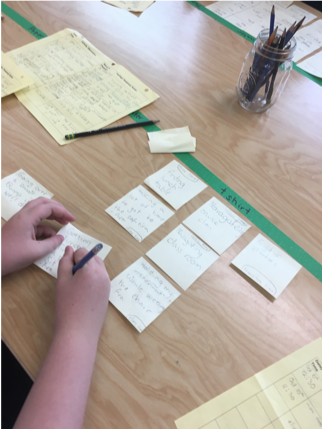The Grades 5s just completed a STEAM project where they were asked how they could make YHS more accessible for students and community members that use wheelchairs. They were tasked with designing an assistive technology while using the designing thinking framework.
 Empathizing with the User
Empathizing with the User
To learn more about what it might be like to use a wheelchair, the Grade 5 students surveyed the school to identify any barriers or challenges such as stairs, doors without automatic openers, and furniture that is not accessible.
Next, they had the opportunity to interview Jenna from the Rick Hansen Foundation. Jenna talked about her experience at school as a child, barriers and challenges she faces today and how she has made her home more accessible with universal design.
Finally, students learned firsthand by using a wheelchair for an hour of a school day.
 Defining the Problem
Defining the Problem
After doing a survey of the school, meeting Jenna, and experiencing a part of the school day using a wheelchair, students were asked to identify a problem to solve. They used the recordings in their observations books to help identify trends and common problems. Students used strategies like ‘sticker voting’ and ‘pitch your idea’ to help determine the best idea to tackle. Once students picked their problem, they reframed their problem as “how might we…” question.
 Ideation
Ideation
To find a solution to their problem, students had to work together to brainstorm multiple possibilities. They were encouraged to use the D School brainstorming rules including: share all of your ideas, build on each other’s suggestions, headline, include all ideas (even the silly ones), and encourage your peers with positive talk.
Prototyping
To create their solution, students started with rough prototyping, building with paper, cardboard or Lego. As students worked, ideas changed, transformed, and expanded.
Rory and Garrett, from BCIT Redlab, came to speak to the students about their work designing assistive technologies. They worked with different groups to help them with design challenges in their prototypes.
Throughout the prototyping process, students were encouraged to test, reflect, and modify their designs as needed.
Jennifer Sharpe
TEAM Coordinator, Junior School
















